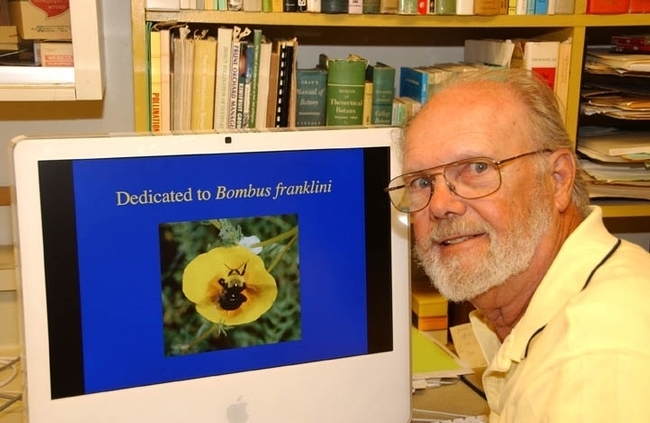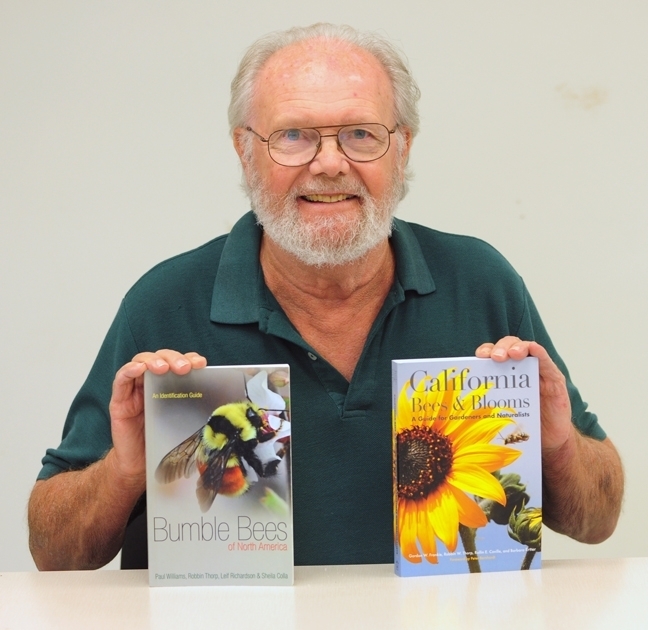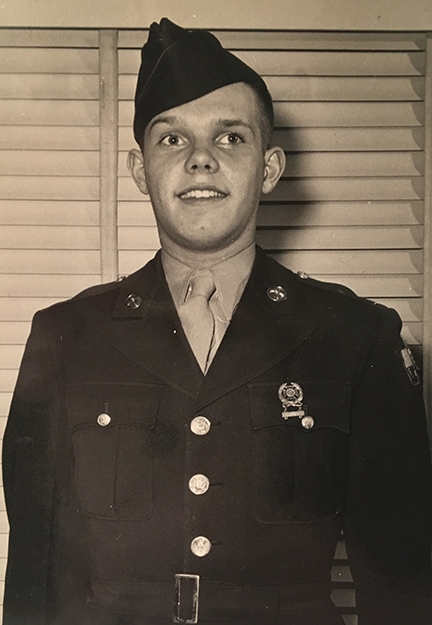- Author: Kathy Keatley Garvey
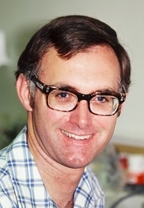
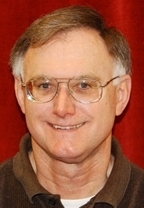
Dr. Mussen, known as "Eric," died Friday, June 3 of liver cancer at age 78.
Family, friends, colleagues and associates are RSVP'ing at https://
Eric joined the UC Davis entomology department on July 1, 1976. Although he retired in 2014, he continued his many activities until a few weeks prior to his death. For nearly four decades, he drew praise as “the honey bee guru,” “the pulse of the bee industry" and as "the go-to person" when consumers, scientists, researchers, students, and the news media sought answers about honey bees.
Born May 12, 1944 in Schenectady, N.Y., Eric received his bachelor's degree in entomology from the University of Massachusetts (after declining an offer to play football at Harvard) and then obtained his master's degree and doctorate in entomology from the University of Minnesota in 1969 and 1975, respectively. Mussen credits his grandfather with sparking his interest in insects. His grandfather, a self-taught naturalist, would take his young grandson to the woods to point out flora and fauna.
Bees became his life, and Eric thoroughly enjoyed his career. For nearly four decades, he wrote and published the bimonthly newsletter, from the UC Apiaries, and short, topical articles called Bee Briefs, providing beekeepers with practical information on all aspects of beekeeping. His research focused on managing honey bees and wild bees for maximum field production, while minimizing pesticide damage to pollinator populations.
Gene Brandi, the 2018 president of the American Beekeeping Federation, remembers presenting him with the prestigious Founders' Award from the Foundation for the Preservation of Honey Bees at the 75th annual American Beekeeping Federation conference in Reno in 2018. "Eric received a well-deserved rousing standing ovation!” said Brandi, extolling him as "an outstanding liaison between the academic world of apiculture and real-world beekeeping and crop pollination."
"Eric was a legend in the beekeeping world who was always willing to go the extra mile to help beekeepers and bee industry organizations deal with issues pertaining to honey bee health, regulations, and various threats to the industry," Brandi said. "He also helped agricultural organizations, government officials, and the general public better understand the value of honey bees to the world. Eric was a great advocate for the honey bee and beekeepers. He was truly a national treasure.
"Eric served on the California State Beekeepers Association Board of Directors for 39 years as apiculturist, but he also was the parliamentarian for many years, and due to his long tenure, was quite the historian as well," Brandi added. "He co-founded the Western Apicultural Society and served as president for six terms. He founded the American Association of Professional Apiculturists and was either president of secretary/treasurer for the first ten years."
"In addition to his work with the aforementioned organizations, Eric was the UC Honey Bee Liaison to California Department of Food and Agriculture, California Department of Pesticide Regulation, EPA, California Farm Bureau Federation, Almond Board of California, National Honey Board, California Bee Breeders' Association, and others. Eric was always willing to help the beekeeping industry by testifying at hearings or writing letters to support the bee industry on various issues. He received many awards from a number of organizations, but the ones with which I am most familiar are the California State Beekeepers Association Distinguished Service Award as well as the Beekeeper of the Year Award. The Foundation for the Preservation of Honey Bees honored Eric in 2018 with the coveted Founders; Award.
Brandi related that "Eric also conducted a number of research projects over the years including research on sacbrood virus, effects of medfly sprays on honey bees, effects of antibiotics of honey bee brood, potential of Neem as a varroa control, effects of selected fungicides on honey bee brood, effects of antibiotics, and effects of high-fructose corn syrup on packaged bee development. Eric's "From the UC Apiaries" newsletter was a renowned publication which contained valuable information about current events in the beekeeping world which beekeepers needed to know. There is so much more that can be said about Eric and his many contributions to the beekeeping world."
When Mussen was nominated (and received) the 2013-14 Distinguished Service Award for Outstanding Extension from the UC Agriculture and Natural Resources (UC ANR), MacArthur Genus Awardee Professor Marla Spivak, Distinguished McKnight University Professor Apiculture/Social Insects at the University of Minnesota, wrote: "Without question, Eric is the No. 1 Extension person dealing with honey bees in the nation, if not the world. Research colleagues, beekeepers and the public are all very lucky to have him.”
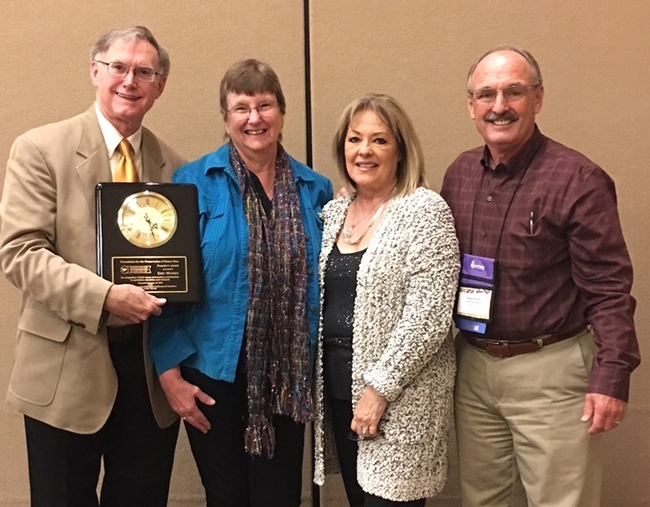
- Author: Kathy Keatley Garvey
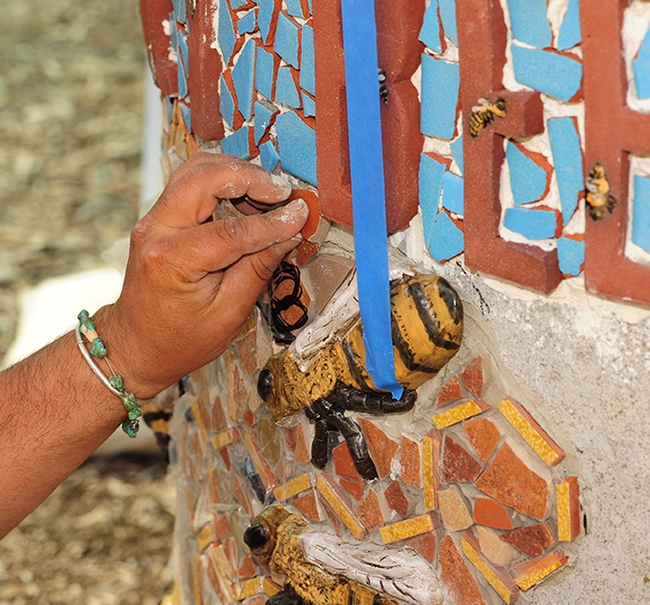
We remember when professional ceramic- mosaic artist Mark Rivera of Davis joined fellow artists in May of 2013 to install newly created art projects at the UC Davis Department of Entomology and Nematology's bee garden, the Häagen-Dazs Honey Bee Haven on Bee Biology Road.
The talented artist was there to assist the UC Davis Art/Science Fusion Program, launched and directed by entomologist/artist Diane Ullman, UC Davis professor of entomology and former chair of the department, and artist-educator Donna Billick of Davis, a self-described "rock artist."
We remember Mark's paint-daubed hands, his gracious humility, and his gentle soul as he worked with Ullman and Billick to install the ceramic mosaic art on the planters at the haven. He and all of us around him were admiring the honey bees: bee motifs on the planters; bees foraging on the flowers in the half-acre garden; and bees hived at the nearby Harry H. Laidlaw Jr. Honey Bee Research Facility.
Mark Rivera died in sleep on May 22 at age 49. He would have been 50 on June 10.
His daughter, Jessica Williams, remembers him as "a kind, compassionate, and genuine soul who touched the lives of many. He was also a talented mosaic artist and created countless pieces of art throughout his community of Davis, California."

"Art and emotion intertwined for Mark. He channeled himself through different mediums, ultimately settling on ceramics, terrazzo and mosaics; these became his 'Mosaic Marks.'
"He was drawn to working on public works of art that were large and impactful. He started with public art in Denver and decided to make the big move in 2000 to Davis for additional opportunities to grow as an artist. He continued with pieces around Davis that reflected the evolution of his soul — having a daughter (Jessica), becoming an uncle (to Josie and Allie) and losing his father."
"His soul and his spirit shined from him and was witnessed by all who met him, leaving an everlasting impact."
"A Celebration of Life is planned for Thursday, June 10, in Central Park in Davis--preceded by an Art Procession from the Co-Op at 4:30 p.m. The Celebration of Mark's Life will start in the Central Park gardens at 6 p.m. for a sharing of stories by those who experienced various aspects of his life."
Ullman recently wrote on her Facebook page: "Mark was a talented man, very kind and compassionate. He was a wonderful teacher and partner in community-built projects. In the UC Davis Art/Science Fusion Program, Mark assisted with nearly every installation we did on campus and even helped us install Nature's Gallery in Washington DC. In this go fund me campaign, his family is raising money for his funeral costs and memorial. If you wish to help, the link is here. His art installations grace our daily lives in Davis. He will be terribly missed."
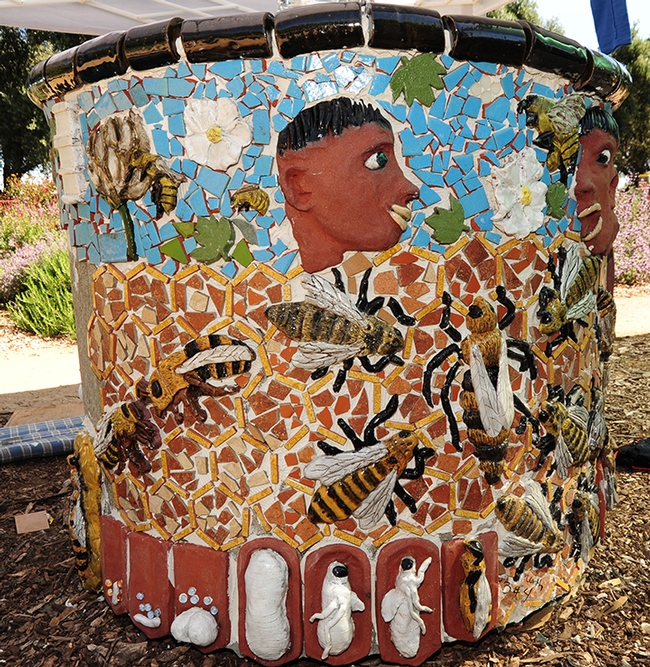
- "Mark has always filled me with joy. He transformed the world around him. He inspired me and so many others to be better. I miss him terribly."
- "He was an amazing, unique artist and I always remember him as a solid and cheerful person."
- "Mark Rivera was a prolific ceramic & mosaic artist, you literally cannot go anywhere in Davis without seeing his colorful and vibrant installations. He was also an incredibly caring, gentle, and humble man, who seemed to always have a big smile on the ready & a twinkle in his eye."
Another friend posted author-poet Anita Krishan's quote that captures the artistic magic of the legacy of Mark Rivera:
“We are mosaics--pieces of light, love, history, stars--glued together with magic and music and words.”
Resources:
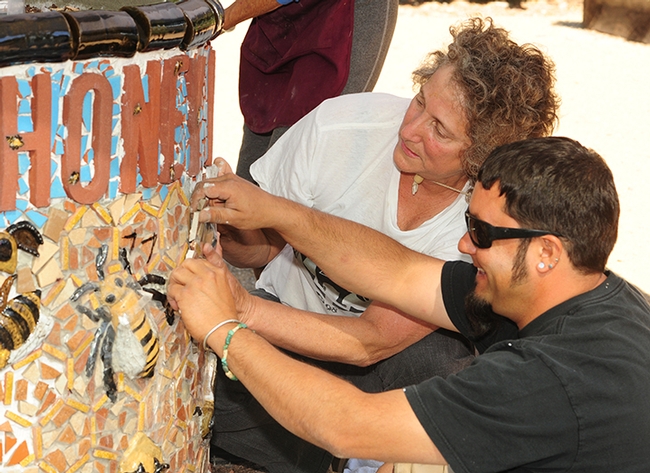
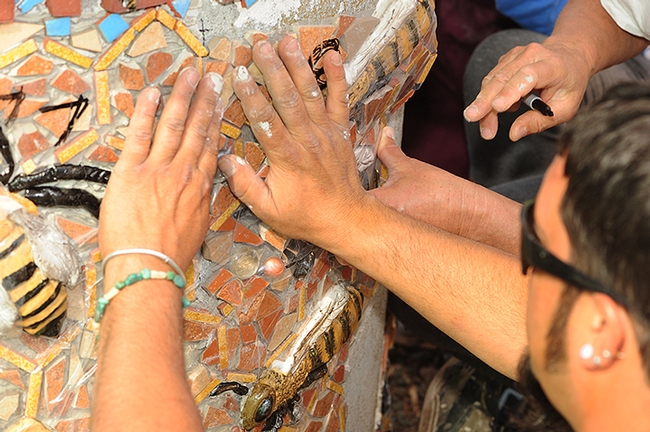
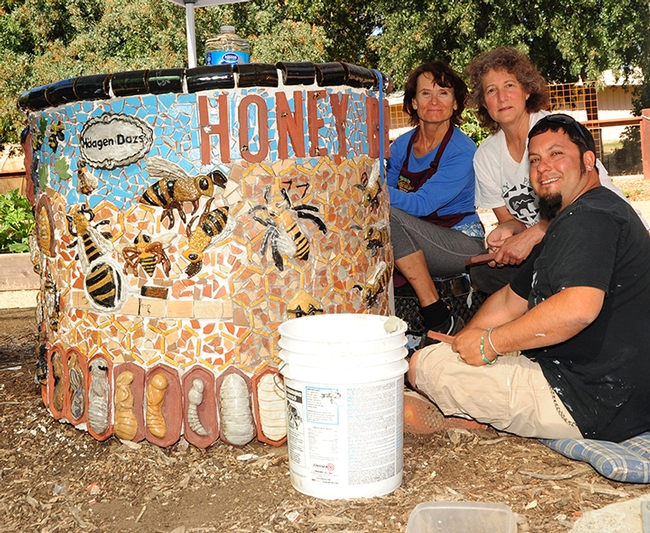
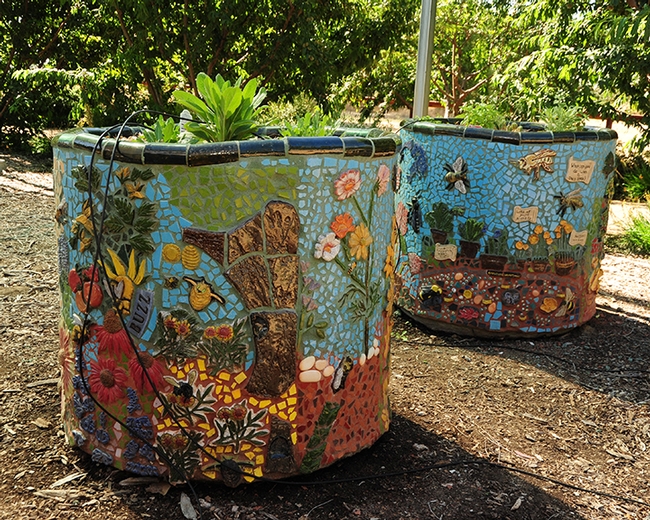
- Author: Kathy Keatley Garvey
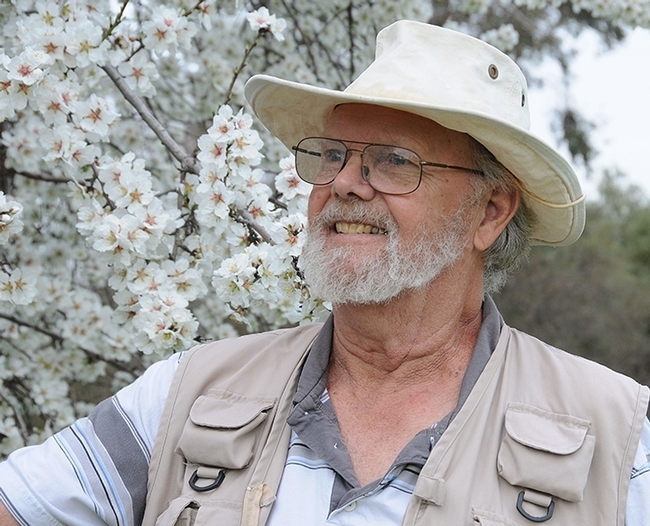
The late Robbin Thorp, the renowned UC Davis distinguished emeritus professor of entomology and global bee authority who will be memorialized at a celebration of life on Friday, Oct. 11 at 6 p.m. in the Putah Creek Lodge, UC Davis, began his career studying honey bees.
Professor Thorp, who served as a member of the UC Davis entomology faculty for 30 years, from 1964-1994, continued to engage in research, teaching and public service until a few weeks before his death on June 7. In his retirement, he co-authored two books, both in 2014: Bumble Bees of North America: An Identification Guide and California Bees and Blooms: A Guide for Gardeners and Naturalists.
Thorp was a tireless advocate of pollinator species protection and conservation and known for his expertise, dedication and passion in protecting native pollinators, especially bumble bees, and for his teaching, research and public service. He was an authority on pollination ecology, ecology and systematics of honey bees, bumble bees, vernal pool bees, conservation of bees, native bees and crop pollination, and bees of urban gardens and agricultural landscapes.
The distinguished emeritus professor was also an authority on honey bees.
Said Eric Mussen, Extension apiculturist emeritus: "We should not forget that Robbin originally was hired to work on honey bees, and he did. His greatest area of expertise was the use of honey bees in almond pollination. Robbin determined that until the colonies reached the population size of six frames of bees, they did not have enough spare bees to serve as foragers (pollinate almonds) since they were all needed to keep the brood warm."
"He also noted that the amount of pollen collected by the bees in a colony was pretty much in direct proportion to colony size, peaking at between 10 and 12 frames of bees," Mussen said. "It was obvious to Robbin that the bees still visited almond blossoms for nectar, days after there was no pollen left in the flowers and the stigmata were no longer young enough to be pollinated. Other studies determined which blossoms along the branches were pollinated earlier and later during the season. All of those studies were very well designed and the results contributed significantly to our recommendations to growers and beekeepers for obtaining maximum benefit from the bees."
“Robbin's scientific achievements during his retirement rival the typical career productivity of many other academic scientists,” said Steve Nadler, professor and chair of the UC Davis Department of Entomology and Nematology. “His contributions in support of understanding bee biodiversity and systematics are a true scientific legacy.” (See more about Robbin Thorp)
Robbin Thorp was a treasure, a gem in the entomological world of bees and beyond.
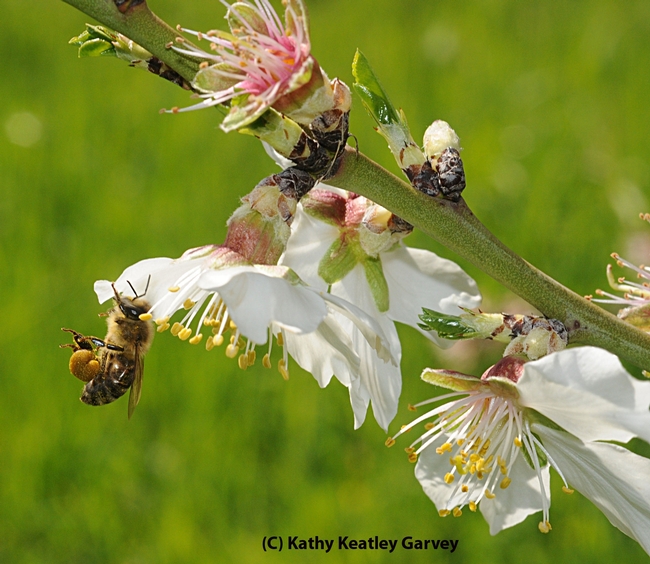
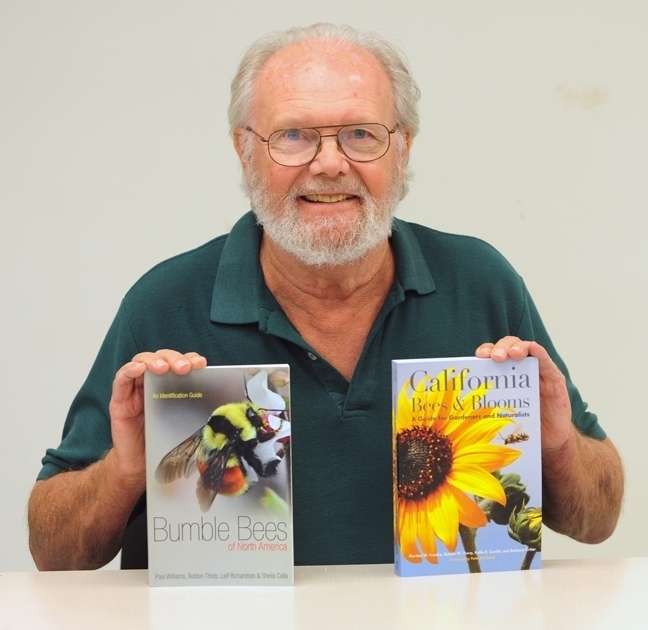
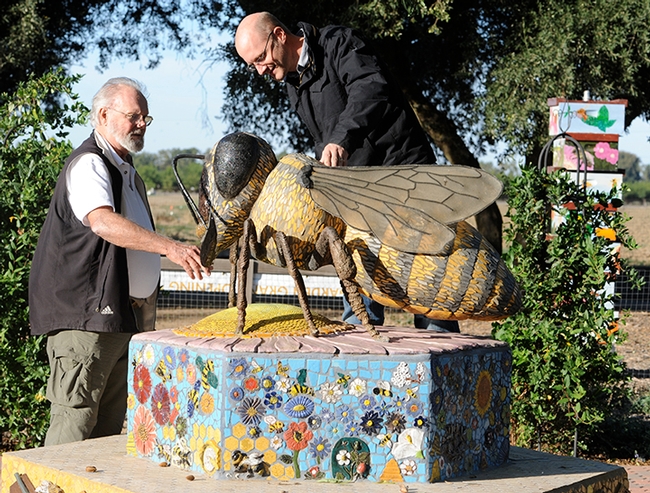
- Author: Kathy Keatley Garvey
Robbin Thorp, distinguished emeritus professor of entomology at the University of California, Davis, was a global authority on bees and he generously shared his expertise with others.
"Robbin had a long, well-respected career in pollination biology and bee taxonomy, but when he retired, he became even more engaged," said Lynn Kimsey, director of the Bohart Museum of Entomology and professor of entomology at UC Davis. "He became the go-to person for everyone working on pollination in the western states. Many careers were made with his assistance."
"I've known Robbin since I was a graduate student at UC Davis," Kimsey said. "Even though he wasn't my major professor, my project was on bees and he was incredibly helpful and supportive. His enthusiasm about pollinators and bees in particular actually grew after he retired, and he continued helping students and researchers and was the backbone of so much research. His support and kindness was matched by his undemanding assistance and expertise. What a terrible loss to his family and to the research and conservation communities."
Now Kimsey is coordinating the celebration of life for Thorp. It will take place from 6 to 8 p.m., Friday, Oct. 11 in the Putah Creek Lodge, located on Putah Creek Lodge Drive, southwest section of the UC Davis Arboretum.
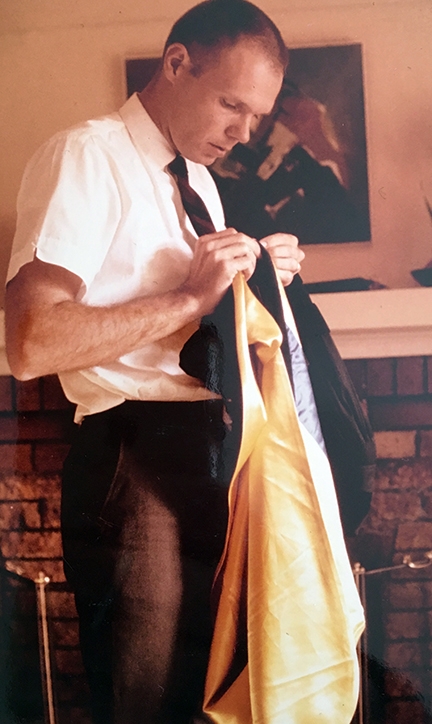
Thorp, a member of the UC Davis entomology faculty for 30 years, from 1964-1994, achieved emeritus status in 1994 but continued to engage in research, teaching and public service until a few weeks before his death.
A tireless advocate of pollinator species protection and conservation, Thorp was known for his expertise, dedication and passion in protecting native pollinators, especially bumble bees, and for his teaching, research and public service. He was an authority on pollination ecology, ecology and systematics of honey bees, bumble bees, vernal pool bees, conservation of bees, native bees and crop pollination, and bees of urban gardens and agricultural landscapes.
“Robbin's scientific achievements during his retirement rival the typical career productivity of many other academic scientists,” said Steve Nadler, professor and chair of the UC Davis Department of Entomology and Nematology. “His contributions in support of understanding bee biodiversity and systematics are a true scientific legacy.
In his retirement, Thorp co-authored two books Bumble Bees of North America: An Identification Guide (Princeton University, 2014) and California Bees and Blooms: A Guide for Gardeners and Naturalists (Heyday, 2014). Locally, he was active in research projects and open houses at the Bohart Museum of Entomology and the Häagen-Dazs Honey Bee Haven, a half-acre bee garden on Bee Biology Road operated by the UC Davis Department of Entomology and Nematology. He detected and identified more than 80 species of bees in the haven.
Colleague Norman Gary, UC Davis emeritus professor of entomology, earlier said that "I doubt that there is anyone else in the world who can compete with his expertise in the systematics of the 20,000 species of bees on this earth."
"Robbin was one of the few people in North America who could identify bees down to the species level,” said former graduate student Katharina Ullmann, director of the UC Davis Student Farm, Agricultural Sustainability Institute, and a UC Davis alumnus (doctorate in entomology).
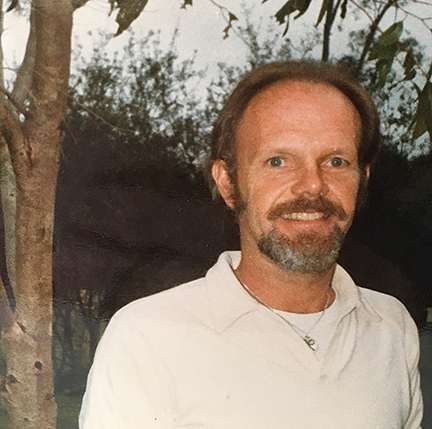
Every summer from 2002 to 2018, Thorp volunteered his time and expertise to teach at The Bee Course, an annual workshop sponsored by the American Museum of Natural History and held at the Southwestern Research Station, Portal, Ariz. The intensive 9-day workshop, considered the world's premiere native bee biology and taxonomic course, is geared for conservation biologists, pollination ecologists and other biologists.
Highly honored by his peers, Thorp was named a fellow of the California Academy of Sciences, San Francisco in 1986; recipient of the Edward A. Dickson Emeriti Professorship of UC Davis in 2010; and recipient of the UC Davis Distinguished Emeritus Award in 2015. Other honors included: member of the UC Davis Bee Team that won PBESA's Team Award in 2013. In addition, he was a past president (2010-2011) of the Davis Botanical Society, and former chair (1992-2011) of the Advisory Committee for the Jepson Prairie Reserve, UC Davis/Natural Reserve System.
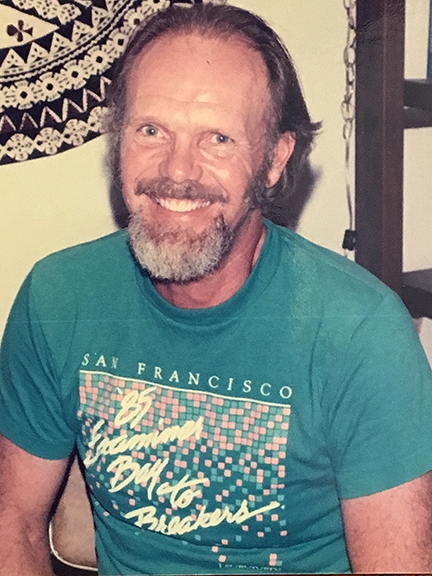
Williams said the PBESA symposium was “perhaps the greatest honor one can receive from close colleagues--a special symposium honoring him and his contributions to the field of bee biology and pollination. We designed the symposium to honor the impact of Dr. Thorp, on the field of bee biology and conservation, but at the same time present innovative research that brings together bee and pollination biology researchers."
An authority on the critically imperiled Franklin's bumble bee, Bombus franklini, Thorp began monitoring the bumble bee population in 1998 in its narrow distribution range of southern Oregon and northern California. He had not seen it since 2006 and was instrumental in placing the bee on the Red List of Threatened Species of the International Union for Conservation of Nature and Natural Resources (IUCN). He was the former regional co-chair of the North America IUCN Bumblebee Specialist Group.
In August of 2016 a documentary crew from CNN, headed by John Sutter, followed Thorp to a meadow where Thorp last saw Franklin's bumble bee. Sutter wrote about Thorp, then 82, in a piece he titled "The Old Man and the Bee," a spinoff of Ernest Hemingway's "The Old Man and the Sea."
His wife, Joyce, 84, preceded him in death on Dec. 9, 2018. Survivors include three children, Kelly, Katie and Jeff, and stepchildren Donna Gary and Steve Gary.
Those who plan to attend the celebration of life may make reservations at https://bit.ly/2lLG20E. For more information on the event, contact coordinator Lynn Kimsey at lskimsey@ucdavis.edu.
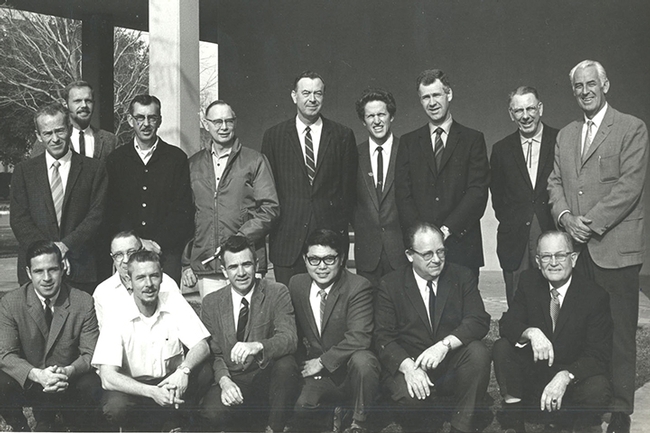
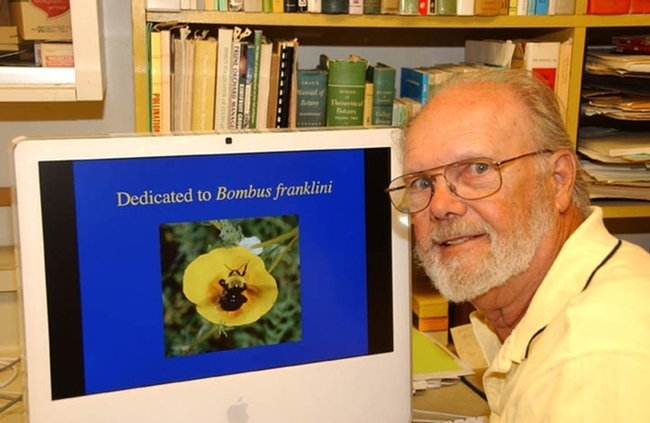
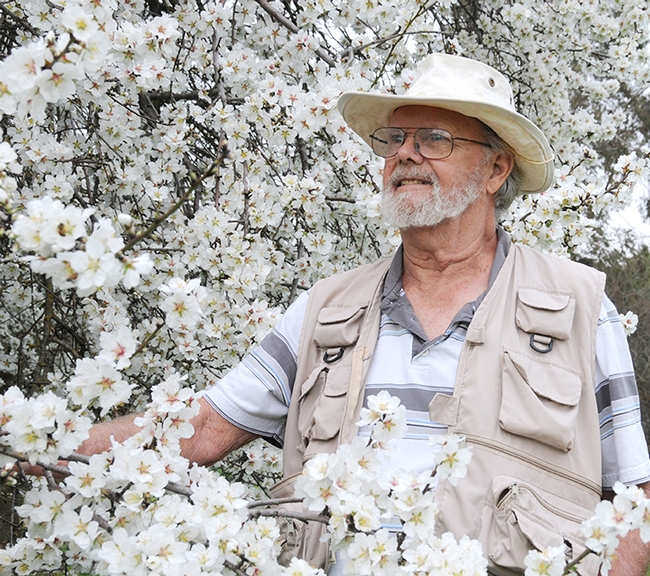
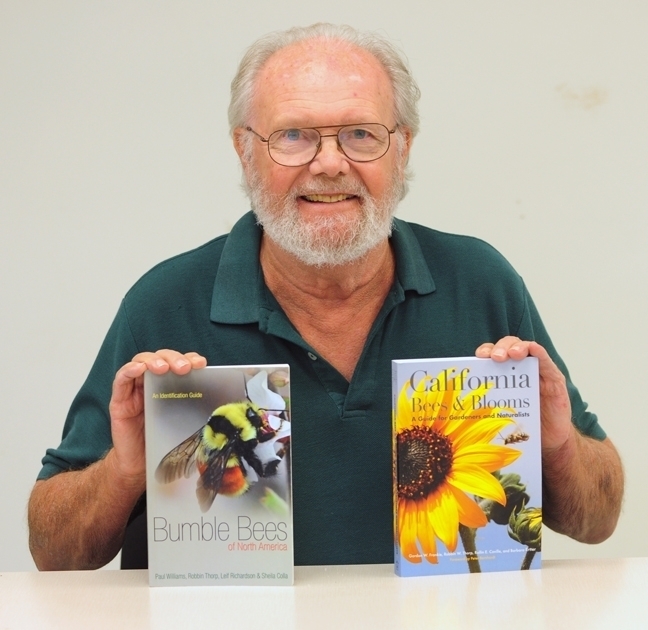
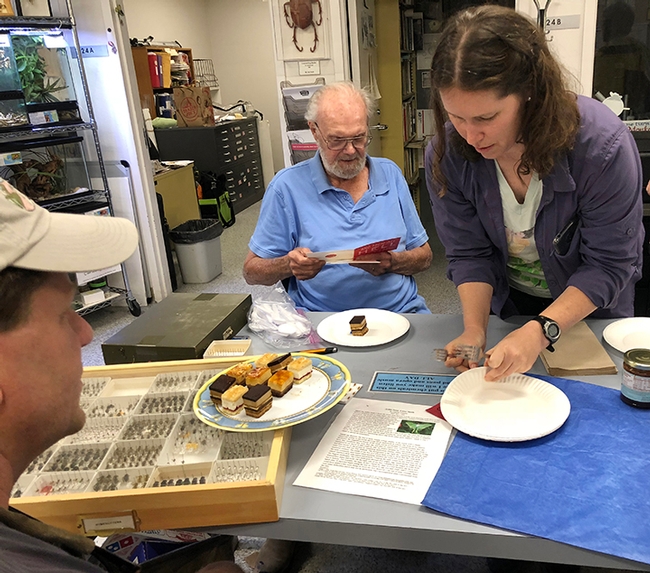
- Author: Kathy Keatley Garvey
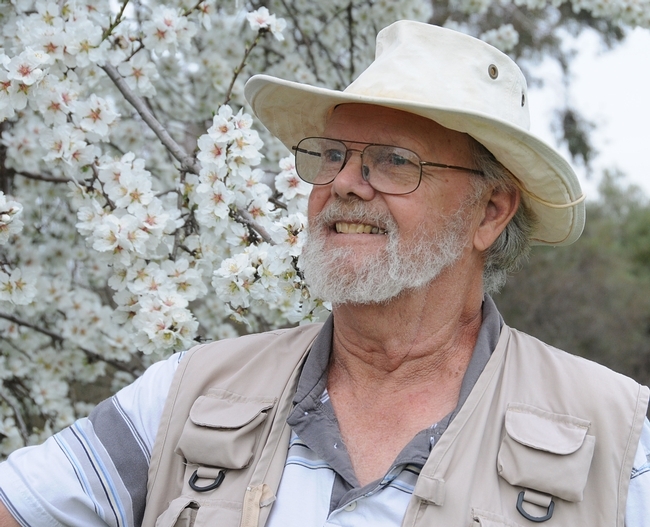
The celebration of life for global bee expert Robbin Thorp, distinguished emeritus professor of entomology at UC Davis and a beloved scientist, is scheduled for Friday, Oct. 11 from 6 to 8 p.m. in the Putah Creek Lodge. The venue is located on Putah Creek Drive, southwest corner of the UC Davis Arboretum.
Lynn Kimsey (lskimsey@ucdavis.edu), director of the Bohart Museum of Entomology and UC Davis professor of entomology, is coordinating the memorial, with Professor Neal Williams (nmwilliams@ucdavis.edu) assisting).
Dr. Thorp died June 7 at his home in Davis at age 85. A 30-year member of the UC Davis entomology faculty from 1964-1994, he achieved emeritus status in 1994 but continued to engage in research, teaching and public service until a few weeks before his death. He was named a UC Davis distinguished emeritus professor in 2014.
A tireless advocate of pollinator species protection and conservation, Dr. Thorp was known for his expertise, dedication and passion in protecting native pollinators, especially bumble bees, and for his teaching, research and public service. He was an authority on pollination ecology, ecology and systematics of honey bees, bumble bees, vernal pool bees, conservation of bees, native bees and crop pollination, and bees of urban gardens and agricultural landscapes.
“Robbin's scientific achievements during his retirement rival the typical career productivity of many other academic scientists,” said Steve Nadler, professor and chair of the UC Davis Department of Entomology and Nematology. “His contributions in support of understanding bee biodiversity and systematics are a true scientific legacy.”
Professor Kimsey recalled: "I've known Robbin since I was a graduate student at UC Davis. Even though he wasn't my major professor, my project was on bees and he was incredibly helpful and supportive. His enthusiasm about pollinators and bees in particular actually grew after he retired, and he continued helping students and researchers and was the backbone of so much research. His support and kindness was matched by his undemanding assistance and expertise. What a terrible loss to his family and to the research and conservation communities."
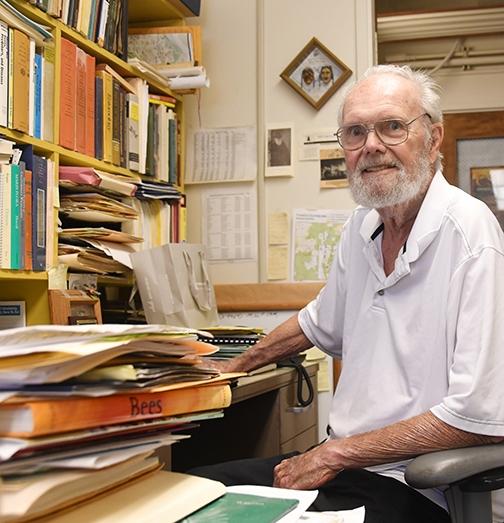
In his retirement, Dr. Thorp co-authored two books Bumble Bees of North America: An Identification Guide (Princeton University, 2014) and California Bees and Blooms: A Guide for Gardeners and Naturalists (Heyday, 2014). Locally, he was active in research projects and open houses at the Bohart Museum of Entomology and the Häagen-Dazs Honey Bee Haven. In his research, he monitored bees in the haven, a half-acre bee garden on Bee Biology Road operated by the UC Davis Department of Entomology and Nematology. He detected more than 80 species of bees in the garden.
Colleague Norman Gary, UC Davis emeritus professor of entomology, noted earlier this year that Robbin "is recognized internationally for his expertise and research on bees, especially non-Apis species, known as wild bees. I doubt that there is anyone else in the world who can compete with his expertise in the systematics of the 20,000 species of bees on this earth. He has the perfect balance of research of field research on the biology and behavior as well as laboratory research on the taxonomy of bees.” He was the go-to person to identify a bee by species.
Dr. Thorp was an authority on the critically imperiled Franklin's bumble bee (Bombus franklini), which he began monitoring in 1998 in its narrow distribution range of southern Oregon and northern California. He was instrumental in placing Franklin's bumble bee on the Red List of Threatened Species of the International Union for Conservation of Nature and Natural Resources (IUCN). In 2010, he and the Xerces Society for Invertebrate Conservation petitioned the U.S. Fish and Wildlife Service for it to be placed on the endangered species list. The U. S. Fish and Wildlife placed it on its proposed endangered species list on Aug. 14, 2019. (See Bug Squad blog.)
In August of 2016 a documentary crew from CNN, headed by John Sutter, followed him to a meadow where Dr. Thorp last saw Franklin's bumble bee in 2006. Sutter wrote about the UC Davis entomologist, then 82, in a piece he titled "The Old Man and the Bee."
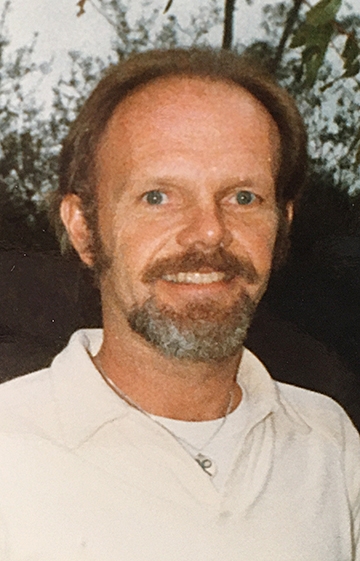
Every summer from 2002 to 2018, Dr. Thorp volunteered his time and expertise to teach at The Bee Course, an annual workshop sponsored by the American Museum of Natural History and held at the Southwestern Research Station, Portal, Ariz. The intensive 9-day workshop, considered the world's premiere native bee biology and taxonomic course, is geared for conservation biologists, pollination ecologists and other biologists.
Highly honored by his peers, Dr. Thorp was named a fellow of the California Academy of Sciences, San Francisco in 1986; recipient of the Edward A. Dickson Emeriti Professorship of UC Davis in 2010; and recipient of the UC Davis Distinguished Emeritus Award in 2015. Other honors included: member of the UC Davis Bee Team that won PBESA's Team Award in 2013. In addition, he was a past president (2010-2011) of the Davis Botanical Society, and former chair (1992-2011) of the Advisory Committee for the Jepson Prairie Reserve, UC Davis/Natural Reserve System.
Professor Claire Kremen of the University of British Columbia, formerly of UC Berkeley, praised him in her letter of support for his nomination for distinguished emeritus professor in 2014:
"I have had the privilege of working with Dr. Thorp as a close colleague since 1999," she wrote. "I can definitely say that without his contributions, I could never have developed as extensive and impactful a research program on pollinator conservation and pollination services. It is even more noteworthy that Dr. Thorp's contributions to this research program have all occurred since his 'retirement'– he has had a very active retirement indeed."
Kremen pointed out three main contributions:
- "First, he has provided expert input into the design of protocols for the research, including assays for pollinator effectiveness, developing citizen science methods, rearing experimental bumble bee colonies, monitoring bumble bee colony properties in the field, and developing pollinator survey methods.
- Second, he has provided expert taxonomic services, including personally identifying over 100,000 native bee specimens that we have collected during this work, and working with us to develop a bee traits database.
- Third, he has trained numerous field assistants and graduate students from my lab in different aspects of bee biology. He's spent long hours with many of my graduate students helping them learn to identify bees. He also helped us develop methods and information sheets for teaching field and lab teams to recognize key generic and family characters for identifying bees in the field and sorting them in the lab. He's advised many of my graduate students on different aspects of their work."
"Collectively, Dr. Thorp's contributions have impacted 35 publications that have emerged from this research program to date, with many more either submitted or nearing the submission stage," Kremen related in her 2014 letter. "He has also been a co-author on a number of these publications. Not only has Dr. Thorp had such a significant effect on the work of my lab, but he conducts his own primary work documenting the status of rare bumble bee species like Bombus franklini and B. occidentalis and contributes at a similar level to other research labs such as with his long-time collaborators Dr. Gordon Frankie and Dr. Neal Williams. It's really quite amazing how he manages to do it all."
His wife, Joyce, 84, preceded him in death on Dec. 9, 2018. Survivors include three children, Kelly, Katie and Jeff, and stepchildren Donna Gary and Steve Gary. (See more information in his obituary on the Department of Entomology and Nematology website.)
